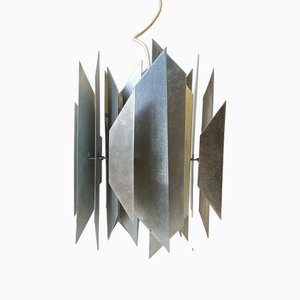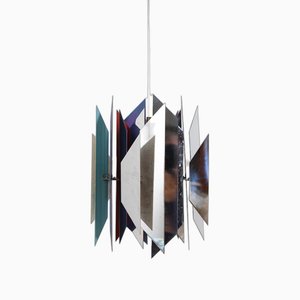
Danish architect and lighting designer Simon P. Henningsen was born in Copenhagen in 1920, the son of legendary lighting designer Poul Henningsen (1894-1967) and his wife Else Stroyberg. Between witnessing his father’s ongoing lighting experiments and being surrounded by design luminaries from a young age, Henningsen emerged from his formative years with a wealth of design expertise.
During World War II, Simon began studying architecture, but like his father never graduated. Instead, he became heavily involved in hands-on work and experiments with his father. In the postwar reconstruction era, Henningsen became infatuated with the Tivoli Gardens in Copenhagen. In 1948, he became the public park’s head architect—which would become his life’s work and from where most of his lighting designs would emerge. Wanting to highlight the natural beauty, Simon developed a style that was artistic and organic, fully rejecting the use of harsh, fluorescent bulbs.
Simon’s first light was unveiled in 1954 and was aptly named the SH Lamp in homage to his father’s collection for Louis Poulsen. Whereas the PH series was based on the researched concept of utilizing multiple shades and diffusors, Simon admitted that his shade wasn’t as scientifically composed as his father’s. Instead, Simon’s designs had a more whimsical aesthetic, realized in whirls, geometric shapes, and flower-like forms, for example the Tivoli Havelampe (1958). This garden illumination—which was later put into production by Danish lighting manufacturer Lyfa—seamlessly blended in to the natural environment of the garden. In 1959, he designed a heating lamp to prolong the outdoor season in Tivoli, which was later put into production by Fog & Mørup.
Henningsen’s most well known work is the spectacular Divan 2 Pendant (1962), designed for the Divan 2 restaurant in Trivoli to hang over the dinner tables and to reflect the natural light of the nightly sunsets and flickering candles. A truly unique lamp, it’s made of sharply angled mirrored glass with a jazzy palette of reds and blues. Lyfa picked up the Divan 2 for its collection, and it became an immediate commercial success. In 1964, the award-winning Divan 2 was exhibited in the Louvre and installed in Georg Jensen’s 5th Avenue store in New York. Other successful lamps by Henningsen for Lyfa include the Kassablanka (ca. 1960s) and Nippon (1970) pendant lights.
Henningsen passed away in 1974 at the young age of 54.






